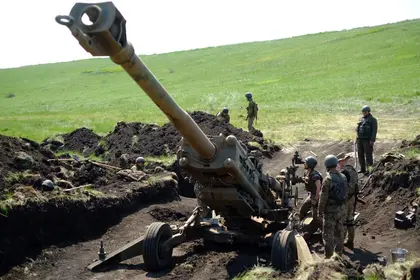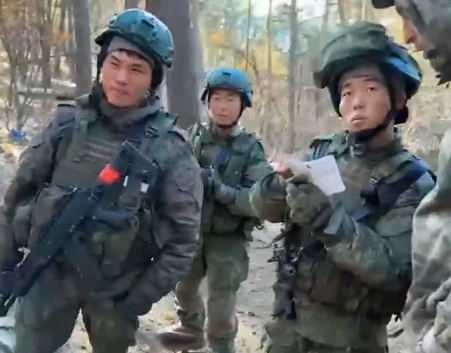In February 2022, Russian President Vladimir Putin and his generals invaded Ukraine with the best of Russia’s armored tank divisions, backed by crack motor-rifle brigades. They intended to inflict a lightning blow on Ukraine, annihilate its military, capture the nation’s capital, and declare the mission accomplished.
For its part, Russia’s Federal Security Service (FSB) expected to liquidate Ukraine’s political leadership and install a puppet government that would submit to Moscow’s colonial ambitions.
- See the newest war in ukraine update from the Kyiv Post's news bulletins published today.
- Obtain the most recent updates on the Ukraine situation today.
JOIN US ON TELEGRAM
Follow our coverage of the war on the @Kyivpost_official.
Only it didn’t work.
Creating a tactical advantage
From the outset of the invasion, Ukraine’s military understood that to engage the Russians head on would be suicidal. Ukraine therefore deployed asymmetrical warfare tactics, sending small units to operate against soft targets in the Russian rear. In doing so, they took out their logistics, ammunition and food supplies.
Knowing that massed artillery would be vulnerable to Russian air attack and counter-battery fire, Ukrainian signals intelligence located Russian command centers. Battalion, brigade and regimental headquarters were hit with surgical artillery strikes, decapitating Russian command and control.
The attack on Kyiv sputtered. A desperate Russian counterattack at Hostomel was crushed by the determined Ukrainian resistance. Denied its own airpower, Ukraine was then quick to integrate commercial off-the-shelf drones into its small units as artillery spotters and target designators. Where Russian vehicles presented themselves, Ukrainian ingenuity turned camera drones into remote-control bombers.

For the Record – Comments from Biden, NATO Secretary General
Russia’s thrust on Kyiv subsequently collapsed. The brigades that had planned a Victory Day celebration in the capital retreated in disarray to the Belarusian frontier.
Stalling the Russian offensive in Donbas
Russia’s offensive in Donbas has also gone awry. In June, Ukraine lured Russian troops into a three-dimensional urban fight in the city of Severodonetsk. This clever choice of terrain negated Russia’s superiority in artillery and maneuver warfare. When the bloody combat was over, battered Russian units found they had been enticed into a pointless fight.
Ukrainian troops slipped away and fell back to highly defensible terrain west of the city. Exhausted, the Russians did not pursue; they were able to do little more than cross the Donets River and then lurch to a halt, where they remain to this day.
These serial failures have led to a constant reshuffling of Putin’s military commanders; indeed six Russian generals have been fired since the launch of full-scale hostilities, with some now reported to be in prison. Some 12 other Russian generals have been killed in combat after being placed in harm’s way due to Russia’s top-heavy, micro-managerial structure of command.
Frustrated and unable to defeat Ukrainian forces on the battlefield, Putin has initiated a war on civilians, deliberately firing scores of cruise missiles on hospitals, churches, schools, theaters and shopping centers. Russian artillery has obliterated hundreds of Ukrainian towns – places of no military significance, including villages whose only offense was to be within range of Russian weapons.
Putin’s troops have massacred, raped and looted. They have rounded up and deported hundreds of thousands of Ukrainian women and children, dispatching them to ‘settlement camps’ as far away as the Russian arctic and Siberia. These are not the tactics of a victorious military; these are the desperate throes of an army that fears defeat.
Russia has lost more than 25,000 troops killed in action, while more than three times that number have been wounded. Countless other Russian soldiers are missing or have deserted. Russian morale is abysmal and reports of mutinies are numerous.
Crack weaponry
Today, almost half of the world’s Stinger missiles are in eastern Ukraine; and these man-portable air-defense systems (MANPADS) have checkmated Russia’s close air support and frontal aviation. Added to that, 20 percent of the world’s supply of Javelin missiles are in the same battlespace. More than a third of Russian main battle tank losses have resulted from Russian crews simply abandoning their vehicles and walking away. They know exactly what a Javelin can do.
The Russian occupiers have come to realize that it is one thing to capture Ukrainian territory, but quite another to hold on to it. Russian supply and ammunition depots are exploding around them on a daily basis. These targets are identified by Ukrainian partisans and deeply inserted Special Operations Forces (SOF) who promptly report their locations.
NATO-supplied long range artillery systems, such as the HIMARS, CAESAR, Krab and the M-777, are delivering precision strikes. It’s not only Russian ammunition depots that are being destroyed; Russian supplies of food, fuel and critical logistics are being interdicted as well.
Undersupplied, under-armed, under-fed and lacking fuel, the battlefield effectiveness of Russian frontline units continues to decline.
It is precisely this fusion of conventional and unconventional force that will drive out the Russian invaders. Patriotic Ukrainians, forced temporarily to live behind enemy lines, provide an ever-increasing force of partisans.
Guided and trained by Ukrainian intelligence officers and SOF, this partisan force will continue to target and harass Russian units. Russia will find, as the Soviets discovered in Afghanistan, that there are no places of safety; around them. Night and day, only danger awaits.
Shredding Russia’s offensive
Forced to fight front and rear, distracted and attacked on all sides, Russian morale will continue to deteriorate. When Russia’s logistical lines are stretched to breaking point and combat effectiveness has reached its nadir, Ukraine will unleash hardy offensives. The first blow may come in Kherson, or it may fall elsewhere, but the offensive will come.
Russian combat forces will be attacked by units of the Ukrainian military, and Russian support and logistical units will be besieged by partisans. Donetsk and Luhansk will be liberated, and Russia will be driven to the border – just as they were driven back from Kyiv.
This war will not end soon. Russian and Ukrainian losses will continue. And make no mistake – Putin will not suddenly realize the error of his ways and pursue peace. He must be defeated on the battlefield.
And right now, that defeat is more possible than ever.
Charles ‘Chuck’ Pfarrer is an American writer, film producer and former U.S. Navy SEAL.
The views expressed in this article are those of the author and not necessarily of Kyiv Post.
You can also highlight the text and press Ctrl + Enter










